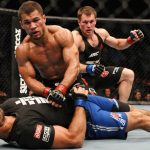Funding and Resource Limitations
Limited funding for UK athletes in combat sports creates a significant barrier to progress. Government support tends to prioritise more mainstream disciplines, leading to sparse institutional resources for fighters. This funding gap means many athletes struggle to afford high-quality coaching, gym access, and essential recovery facilities.
Securing private sponsorships remains a challenge. Unlike football or tennis, combat sports lack widespread commercial appeal, making sponsorship deals rare and often insufficient. This scarcity directly affects athletes’ ability to cover training costs, travel for competitions, and maintain a sustainable career. Without consistent financial backing, fighters frequently juggle multiple jobs, reducing valuable training time.
Also to read : How Do Mixed Martial Arts Athletes Recover from Injuries?
Resource allocation reflects these funding constraints, influencing both grassroots development and elite performance. Training quality suffers when gyms cannot invest in specialized equipment or experienced coaches. Consequently, UK combat sports often lag behind countries with stronger financial ecosystems.
Understanding these complex funding dynamics highlights why targeted government support and innovative sponsorship models are critical. Addressing these challenges not only aids individual athletes but also strengthens the sport’s future sustainability and global competitiveness.
In parallel : How Can UK Combat Sports Evolve and Improve in the Next Decade?
Access to Facilities and Training Opportunities
Access to training facilities is a critical factor shaping athletic development. Unfortunately, many regions face a shortage of high-quality gyms and specialised training centres, limiting athletes’ ability to train effectively. This shortage is especially apparent outside major urban areas, where gym availability often falls short of demand.
Quality coaching also remains unevenly distributed. Athletes living far from metropolitan hubs encounter significant barriers to accessing elite coaching, reducing their chances to benefit from expert guidance that can elevate performance. These regional disparities in facility provision and support impact training consistency and progress.
Efforts to improve access often focus on expanding gym availability and introducing remote coaching options. However, without sustained investment, athletes in underserved areas continue to face hurdles that those in better-resourced regions do not. Addressing these inequalities by enhancing both facilities and coaching quality is essential to level the playing field and foster talent across all regions.
Mental Health and Wellbeing Struggles
Athletes often face significant stress management challenges related to intense training, competition pressure, and public scrutiny. These factors contribute to a high prevalence of anxiety, burnout, and other mental health concerns. Despite recognition of these issues, barriers persist in accessing adequate psychological support. Stigma around seeking help can deter athletes from utilizing mental health resources, intensifying their struggles.
Many sports organisations play a crucial role in addressing athlete mental health by integrating support services within training programs. Providing confidential counseling, stress management workshops, and resilience training helps athletes maintain psychological wellbeing. However, the availability of these resources varies widely across disciplines and levels of competition.
Understanding the complex interplay between physical readiness and mental resilience is essential. Increasing accessibility to psychological support and normalizing discussions about mental health within athletic environments can empower athletes to seek help. The combination of targeted interventions and supportive organisational culture contributes to healthier, more sustainable sporting careers.
Injury Risks and Medical Support
Combat sports pose a significant risk of sports injuries due to their intense physical nature. Fighters often face high-impact blows and repetitive strain, leading to frequent and sometimes severe injuries. These include concussions, fractures, and joint damage, which require immediate and specialised medical attention.
However, accessing prompt medical care for athletes can be challenging. Many combat sports participants, especially at amateur levels, struggle to find timely support from sports medicine experts. This delay can exacerbate injuries and prolong recovery periods, affecting performance and career longevity.
Moreover, the long-term impact of injuries in combat sports is a crucial concern. Chronic pain, limited mobility, and neurological issues may persist, influencing an athlete’s overall wellbeing and future. Injury prevention strategies, such as targeted conditioning and regular medical assessments, are vital to minimise these risks. Recognising and addressing these challenges helps safeguard athletes’ careers and health effectively.
Regulatory and Visa Barriers
Navigating the landscape of combat sports regulation in the UK requires understanding multiple layers of licensing and compliance. Promoters and athletes must adhere to strict safety and conduct standards enforced by governing bodies. This regulatory framework ensures fair competition but can complicate event organisation.
A significant hurdle lies in athlete visas, which are often restrictive for international fighters seeking to compete in the UK. Visa regulations can delay or even prevent participation, impacting both event lineups and athletes’ careers. Competitors need to apply well in advance, meeting criteria that might include proof of skill level or sponsorship.
Additionally, the impact of Brexit has introduced new complexities affecting cross-border mobility. Changes in immigration policies have tightened entry requirements, making it harder for non-UK fighters to access events. Brexit effects have also complicated the transfer of income and paperwork processes for visiting athletes, creating additional logistical challenges.
Understanding these factors is crucial for those involved in organising or competing in UK combat sports. Keeping abreast of evolving regulations and visa requirements can help mitigate barriers that might otherwise hinder event participation and athlete mobility.
Competition Opportunities and Pathways
Limited availability of tournaments within the UK significantly impacts athlete development. Many emerging athletes face challenges due to the relatively small number of domestic competitive events focused on fostering progress. Without frequent competition, athletes may struggle to measure their skills, adapt strategies, or build resilience against diverse opponents.
Access to international exposure remains another major hurdle. Gaining entry to international competitions often involves logistical, financial, and qualification barriers. This lack of exposure can stall growth, as competing globally introduces higher standards and varied styles, essential for refining performance.
The scarcity of such competitive opportunities directly affects the progression of athletes. Without regular, quality matches through UK competitions or international tournaments, athletes risk plateauing in skill and motivation. Addressing these gaps could involve developing more frequent regional tournaments and easing pathways for international participation, thereby creating continuous competitive stimuli necessary for optimal athlete development.
Gender Equality and Diversity Challenges
In combat sports, gender equality in combat sports faces significant hurdles, particularly in funding and media exposure. Female athletes often receive less financial backing and fewer opportunities compared to their male counterparts. This disparity limits their visibility and career development. Addressing this imbalance requires focused efforts to ensure equitable resources and coverage.
To tackle these issues, various initiatives aimed at improving gender equality in UK combat sports have emerged. They focus on creating supportive environments, increasing sponsorships for women, and promoting female competitions. Such programs recognize that female athlete support is essential not just for participation but for sustained success.
Diversity challenges extend beyond gender. Representation and backing for minority groups within combat sports remain limited. Efforts promoting inclusivity strive to break down cultural and systemic barriers, encouraging broader participation. This includes outreach programs and mentorship tailored to underrepresented athletes. Overall, fostering both gender equality in combat sports and diversity enhances the sport’s richness and relevance for all.

